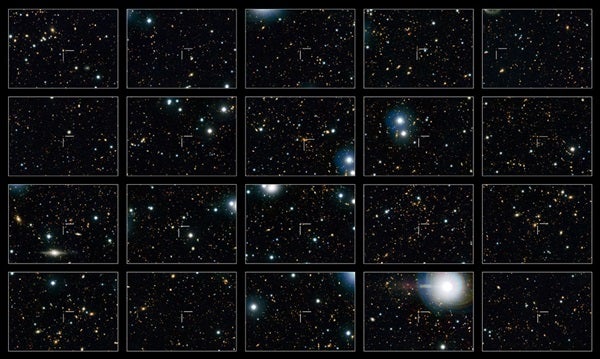Until now, these small snuffed-out galaxies were thought to grow into the larger quenched galaxies we see nearby.
As these galaxies are no longer forming new stars, they were thought to grow by colliding and merging with other smaller quenched galaxies some five to 10 times less massive. However, these mergers would require many such small galaxies floating around for the quenched population to snack on, which astronomers do not see.
Until recently, it had not been possible to explore a sufficient number of quenched galaxies, but now a team of astronomers has used observations from the Hubble COSMOS survey to identify and count these switched-off galaxies throughout the last 8 billion years of cosmic history.
“The apparent puffing up of quenched galaxies has been one of the biggest puzzles about galaxy evolution for many years,” said Marcella Carollo of the Federal Institute of Technology University (ETH) of Zurich, Switzerland. “No single collection of images has been large enough to enable us to study very large numbers of galaxies in exactly the same way until Hubble’s COSMOS,” said Nick Scoville of Caltech in Pasadena, California.
The team used the large set of COSMOS images alongside additional observations from the Canada-France-Hawaii Telescope and the Subaru Telescope, both in Hawaii, to peer back to when the universe was less than half its present age. These observations mapped an area in the sky almost nine times that of the Full Moon.
The quenched galaxies seen at these times are small and compact, and, surprisingly, it seems they stay that way. Rather than puffing up and growing via mergers over time, these small galaxies mostly keep the size they had when their star formation switched off. So why do we see these galaxies apparently growing larger over time?
“We found that a large number of the bigger galaxies instead switch off at later times, joining their smaller quenched siblings and giving the mistaken impression of individual galaxy growth over time,” said Simon Lilly of ETH Zurich. “It’s like saying that the increase in the average apartment size in a city is not due to the addition of new rooms to old buildings, but rather to the construction of new, larger apartments,” said Alvio Renzini of INAF Padua Observatory in Italy.
This tells scientists a lot about how galaxies have evolved over the last 8 billion years of the universe’s history. It was already known that actively star-forming galaxies were smaller in the early universe, explaining why they were smaller when their star formation first switched off.
“COSMOS provided us with simply the best set of observations for this sort of work. It lets us study very large numbers of galaxies in exactly the same way, which hasn’t been possible before,” said Peter Capak of Caltech. “Our study offers a surprisingly simple and obvious explanation to this puzzle. Whenever we see simplicity in nature amidst apparent complexity, it’s very satisfying,” said Carollo.










